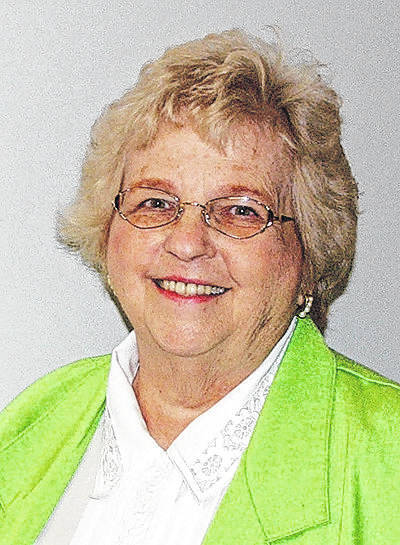
Telephone service has changed greatly since the first phone call was sent and received.
Perhaps some will remember when Dick Tracy of the comics would place a call and listen to a telephone installed on his wrist watch, or when the “spy” Maxwell Smart would take off his shoe to make a phone call. This was not practical, but it apparently worked.
Star Trek crew members carried hand-held devices to contact one another.
It all sounded like sci-fi so many years ago. Today cellular phones are the normal means of communication with phone calls, e-mail, books and even movies available on a personal phone. Phone books may become obsolete since so many families have “given up” their home phones in favor of cell phones.
It wasn’t always that way. When the telephone first came to Xenia in April of 1881, it was so new, few people were interested in the technology. There were about fifteen residents who initially signed up for the service and calling was restricted. As is often the case, anything new is suspected of being useless and expensive.
Soon some of the businesses realized that the phone could be beneficial and so the Pennsylvania Railroad, Hooven and Allison, Allison Eavey and Carson wholesale grocers and the OSSO Home became customers. Soon a few of the doctors and attorneys subscribed to the service.
By 1893, the idea of having a telephone was beginning to pick up. People found that they could call the local grocery, place their order and have it delivered with much less effort. Calls could be placed to the local doctor to receive advice or request a house call.
There was usually only one phone in the house, contained in a wooden box and affixed to a convenient wall. Wires were attached which led outside to a telephone pole. If one wanted to place a call, one only had to turn the crank to ring the operator and give her the name of the individual with whom you wished to speak. Your call would be connected at the telephone office.
As the service became more popular, asking for a person by name gave way to numbers and then more numbers were needed (sound familiar?) Later letters were placed in front of the numbers and then the all number system which is in use today was implemented.
The Xenia Telephone Company hired Harry L. Clark as one of its first operators. In addition, he was also the lineman and trouble shooter. At first young men were hired as operators, but they often forgot to watch their language and so young women were hired for the position. It was not long before the ladies were referred to as “the hello girls.”
In 1885, Mrs. Little wrote to her sister “Our telephone does not work well and they sent a boy to fix it. He emptied the jar and put some new stuff in it and scoured off some rust, I think.” And then ten years later: “Today he has been figuring on putting a telephone on Spencer’s desk – it looks a great deal like a silver candlestick and can be moved on the desk like a drop light.”
In the earlier days, each community had its own telephone service and so calls could not be made from one exchange to another without an additional fee, but in time the local companies were absorbed into the Ohio Bell Telephone Company. All calls from within the county were handled in the Xenia office, including long distance calls.
During 1946 more telephone operators were hired due to the fact that after World War II more folks wanted phones.
There had been 29 operators in 1945. In January there were 42 and by August a total number of operators had increased to 61. At that time, nearly 19,000 calls were handled every day, up by nearly 7,000 from the previous year.
In the fall of 1946, the Ohio Bell offices were on the second and third floor in the building on the northwest corner of Main and Whiteman Streets. The second floor was the area where the operators answered and forwarded calls while the third floor was used mostly as a lounge. The public was invited to view the facility at an open house.
Patrons enjoyed visiting the facility and especially enjoyed the opportunity to “hear your own voice.” They were invited to speak in a normal tone, and then could hear what they had said. Some were surprised at the sound of their own voices over the phone and listened again and again.
More than 1,400 individuals attended the open house. It was quite an experience for the customers to see how each operator answered the phone pleasantly and then connected the call to the proper line. No doubt many were surprised that the operator answered as quickly as she did, given the number of calls placed daily.
The two day open house was a huge success and no doubt patrons were much more tolerant of a short wait for an operator than previously.
The year 1952 brought about another huge change in the local telephone business. That was the year of automation. After April of that year, the friendly “number please” voice was no longer heard when one picked up the phone to make a call. A great deal of new equipment had been installed in order that each phone subscriber would be able to dial without operator assistance.
Car phones were used only by wealthy individuals and then cell phones were available to a limited number of businessmen. Soon cell phones became available to the public at reasonable prices and fees. With the additional phones, area codes were added to the numbers and I understand there will more changes to come.
Dick Tracy would have fit right in.


